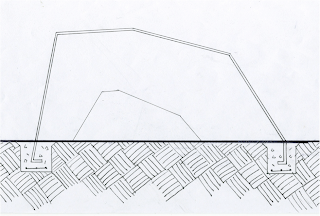27 March 2012
25 March 2012
Final Design
After each group member shared their idea for the form of the building we decided that the best way to come up with a structure was to play around with cutting and folding cardboard/paper until we had the right amount of protection and an aesthetically appealing folie. This led us to several different forms for the folie but we all decided on the following design:
I then added the model into an image of the site to see how it would interact within the surroundings:
I then added the model into an image of the site to see how it would interact within the surroundings:
Brainstorming
As a group we had a session of brainstorming and came up with the following principles about the building within the site:
- the folie has to correlate directly with the surroundings materials such as the story bridge, the roads adjacent, the brisbane river and the large cliff face at the back of the site
- the folie must teach it's users something within the space whether it be learning something physical or gaining knowledge about a certain topic
- the folie must also incorporate the communities reaction to the floods as the site was directly affected by the disaster and was completely flooded itself
After brainstorming each of these ideas we played around with forms that could incorporate a learning space. We came to the idea of learning how to fold a paper crane through the art of Japanese origami. It is well known that the symbol of 1000 paper cranes is a sign of good luck. This idea of having the community fold 1000 paper cranes would represent the exact feeling of the community when Brisbane was hit by the floods. This activity was done by several school students and then pinned up in the Hiroshima Park and all over Japan after it was destroyed by the tsunamis.
In order to come up with an appropriate design for our folie we decided to separately brainstorm on possible forms of a folie that would represent and encourage the public to learn the art of origami within the space. In order to do this I decided to learn how to fold a paper crane myself and along the way photograph the form and shapes that were being made by the folded paper. The following photographs show the several different designs I came across whilst trying to fold a paper crane:
- the folie has to correlate directly with the surroundings materials such as the story bridge, the roads adjacent, the brisbane river and the large cliff face at the back of the site
- the folie must teach it's users something within the space whether it be learning something physical or gaining knowledge about a certain topic
- the folie must also incorporate the communities reaction to the floods as the site was directly affected by the disaster and was completely flooded itself
After brainstorming each of these ideas we played around with forms that could incorporate a learning space. We came to the idea of learning how to fold a paper crane through the art of Japanese origami. It is well known that the symbol of 1000 paper cranes is a sign of good luck. This idea of having the community fold 1000 paper cranes would represent the exact feeling of the community when Brisbane was hit by the floods. This activity was done by several school students and then pinned up in the Hiroshima Park and all over Japan after it was destroyed by the tsunamis.
In order to come up with an appropriate design for our folie we decided to separately brainstorm on possible forms of a folie that would represent and encourage the public to learn the art of origami within the space. In order to do this I decided to learn how to fold a paper crane myself and along the way photograph the form and shapes that were being made by the folded paper. The following photographs show the several different designs I came across whilst trying to fold a paper crane:
Site Analysis of Howard Smith Wharves
In order to fully understand the site I did a site analysis of the Howard Smith Wharves in the following areas:
13 March 2012
Subscribe to:
Posts (Atom)


































